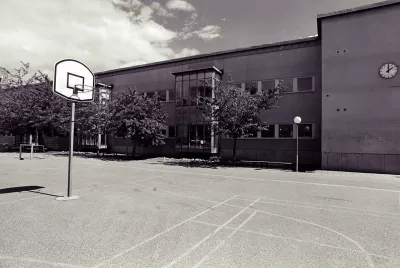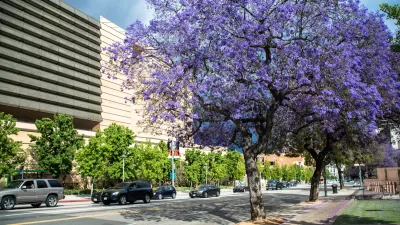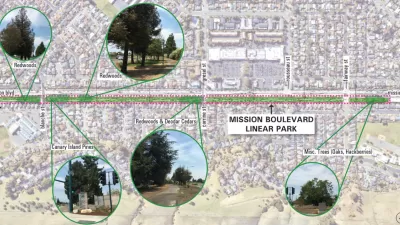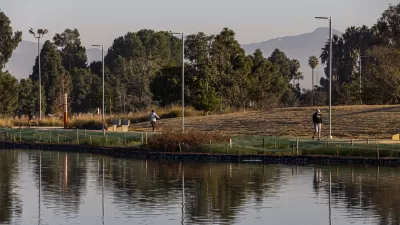Advocates for increasing green space on school campuses say giving students a more healthy outdoor environment can also reduce the urban heat island effect and improve public health in historically underserved communities.

According to an article by Tony Barboza, "too many children are forced to learn and play in paved-over, fenced-in and often treeless campuses that draw apt comparisons to prison yards or parking lots."
"These conditions are detrimental to learning, health and well-being, and especially harmful because they are so common in the same low-income communities of color that already suffer from a lack of tree canopy, park space and higher exposure to heat and pollution." To address this issue, Los Angeles Unified School District’s new superintendent, Alberto Carvalho, "has promised to release a plan within his first 100 days to green schoolyards, starting with asphalt-dominated campuses in neighborhoods with the greatest need for open space."
The new superintendent isn't the first to notice this problem. Last year, Planetizen reported on the Trust for Public Land's analysis of urban schoolyards and their potential to double as much-needed green space in park-poor communities. "Advocacy groups say that despite some success at individual school sites, district and state bureaucracy is a barrier to removing asphalt from school campuses across the city, sometimes because of concerns about increased maintenance costs or due to space requirements for activities like basketball, tetherball and four square that restrict the number of trees and amount landscaping that can be planted."
Barboza points out that converting LAUSD's schoolyards, at less than $2 million per campus, would cost less than building a new park, and argues that the benefits of healthy, green environments outweigh the investment required.
FULL STORY: LA's asphalt-covered schoolyards are an environmental injustice

Alabama: Trump Terminates Settlements for Black Communities Harmed By Raw Sewage
Trump deemed the landmark civil rights agreement “illegal DEI and environmental justice policy.”

Study: Maui’s Plan to Convert Vacation Rentals to Long-Term Housing Could Cause Nearly $1 Billion Economic Loss
The plan would reduce visitor accommodation by 25% resulting in 1,900 jobs lost.

Why Should We Subsidize Public Transportation?
Many public transit agencies face financial stress due to rising costs, declining fare revenue, and declining subsidies. Transit advocates must provide a strong business case for increasing public transit funding.

Paris Bike Boom Leads to Steep Drop in Air Pollution
The French city’s air quality has improved dramatically in the past 20 years, coinciding with a growth in cycling.

Why Housing Costs More to Build in California Than in Texas
Hard costs like labor and materials combined with ‘soft’ costs such as permitting make building in the San Francisco Bay Area almost three times as costly as in Texas cities.

San Diego County Sees a Rise in Urban Coyotes
San Diego County experiences a rise in urban coyotes, as sightings become prevalent throughout its urban neighbourhoods and surrounding areas.
Urban Design for Planners 1: Software Tools
This six-course series explores essential urban design concepts using open source software and equips planners with the tools they need to participate fully in the urban design process.
Planning for Universal Design
Learn the tools for implementing Universal Design in planning regulations.
Smith Gee Studio
Alamo Area Metropolitan Planning Organization
City of Santa Clarita
Institute for Housing and Urban Development Studies (IHS)
City of Grandview
Harvard GSD Executive Education
Toledo-Lucas County Plan Commissions
Salt Lake City
NYU Wagner Graduate School of Public Service





























